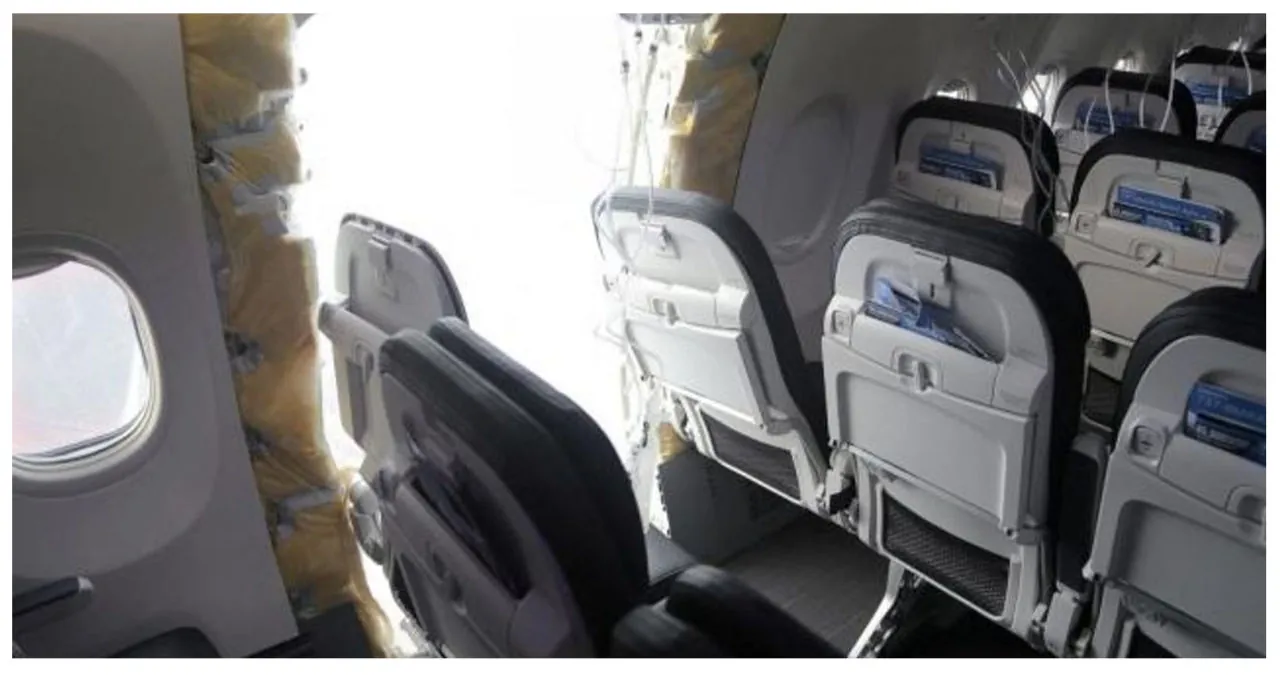According to a complaint filed on Tuesday, four passengers are suing Alaska Airlines and Boeing after they experienced “terror” when a door plug “blew off” during their flight.
According to the National Transportation Safety Board, the fuselage door plug of a Boeing 737 Max 9 detached shortly after Alaska Airlines Flight 1282 departed from Portland International Airport on January 5. This led to a depressurized cabin and exposed passengers to the open air at a high altitude. Fortunately, there were no serious injuries, and the plane successfully made an emergency landing.
According to the complaint, two California residents and two Washington state residents who were on the flight are suing the two companies for alleged injuries. These injuries include intense fear, distress, anxiety, trauma, and physical pain.
According to the complaint, one plaintiff expressed the belief that “This is the end.”
According to Seattle attorney Mark Lindquist, who filed the complaint on behalf of the four passengers, some passengers even sent what they believed could be their last text messages in this world.
According to the complaint, one of the plaintiffs sent a text message saying, “Mom, our plane is depressurized. We’re wearing masks. I love you.”
According to the complaint, it is alleged that Boeing provided a plane with a defective door plug, and Alaska management acknowledged the aircraft’s unsuitability for ocean travel but still chose to operate it on land.
During an interview with ABC News on January 7th, NTSB Chair Jennifer Homendy disclosed that pilots in Alaska had reported a pressurization alert on the aforementioned plane three times between December 7th and January 4th. However, after investigation, it was deemed to be harmless. Homendy mentioned that Alaska conducted maintenance tests and returned the plane to service, but imposed a restriction prohibiting it from flying over water to Hawaii. Federal records indicate that the plane had been operational since October 31st.
A lawsuit has been filed in King County Superior Court in Washington state, seeking unspecified damages against Boeing and Alaska Airlines for alleged negligence. The complaint also includes a product liability claim against Boeing under the Washington Product Liability Act, asserting that the aircraft was “unreasonably dangerous and defective.”
The NTSB is currently investigating the incident.
In a statement, Lindquist acknowledged that it is still too early to determine the exact cause of the incident. However, he emphasized that Boeing bears the ultimate responsibility for ensuring the safety of their planes, while Alaska Airlines holds the ultimate responsibility for the safety of their passengers.
Alaska Airlines took the decision to ground its Max 9 fleet immediately after the incident took place. When asked about the lawsuit, Alaska Airlines stated that it is unable to provide any comments at this time due to the ongoing litigation.
Boeing declined to comment on the lawsuit.
In the aftermath of the incident, around 171 Boeing 737 Max 9 planes were grounded worldwide by the Federal Aviation Administration.
The FAA is currently ramping up its oversight of Boeing and has recently initiated an audit of the company’s production and manufacturing processes.
Spirit AeroSystems, the company responsible for manufacturing the fuselage of the Boeing 737 Max 9, has expressed its commitment to supporting the FAA’s audit of Boeing’s production line and suppliers. Although not named as a defendant in the lawsuit, Spirit AeroSystems remains dedicated to ensuring the highest standards of safety and quality throughout the manufacturing process.
“Spirit AeroSystems is fully dedicated to assisting the FAA with their examination of our production and manufacturing procedures to guarantee adherence to the FAA Quality Management System. As valued partners to our customers, Spirit AeroSystems places the utmost importance on quality, product integrity, and compliance,” Spirit AeroSystems stated.
Boeing CEO Dave Calhoun recently addressed employees at the 737 production facility in Renton, Washington. During the meeting, Calhoun expressed that the company will be taking a proactive approach to the incident by first acknowledging their mistake.
“We will tackle this issue with utmost dedication and ensure complete transparency throughout the entire process,” stated Calhoun during the meeting. “Our collaboration with the NTSB, who is currently investigating the accident, will help us determine the root cause.”
According to Homendy, the incident had the potential to be even more disastrous if the conditions were different. The seats adjacent to the door plug that went missing were unoccupied, and the incident took place around 10 minutes after takeoff, when passengers would typically still have their seatbelts fastened. This occurred at an altitude of approximately 16,000 feet.
According to Homendy, if the incident had occurred at higher altitudes, specifically at 30,000 or 35,000 feet, the pressure differential would have been significantly higher. This would have resulted in a more violent and explosive event with potentially catastrophic consequences.
Alaska Airlines has taken the initiative to provide complete refunds to all passengers aboard Flight 1282. Additionally, the company has gone above and beyond by offering a generous cash payment of $1,500 to cover any incidental expenses and guarantee the immediate well-being of the affected passengers.
In a statement, Lindquist expressed that his clients are seeking accountability from Boeing and Alaska Airlines. They also desire reassurances that such incidents will not occur again to anyone.
Passengers aboard Alaska Airlines Flight 1282 have taken legal action against Boeing in a proposed class-action lawsuit regarding the incident.

